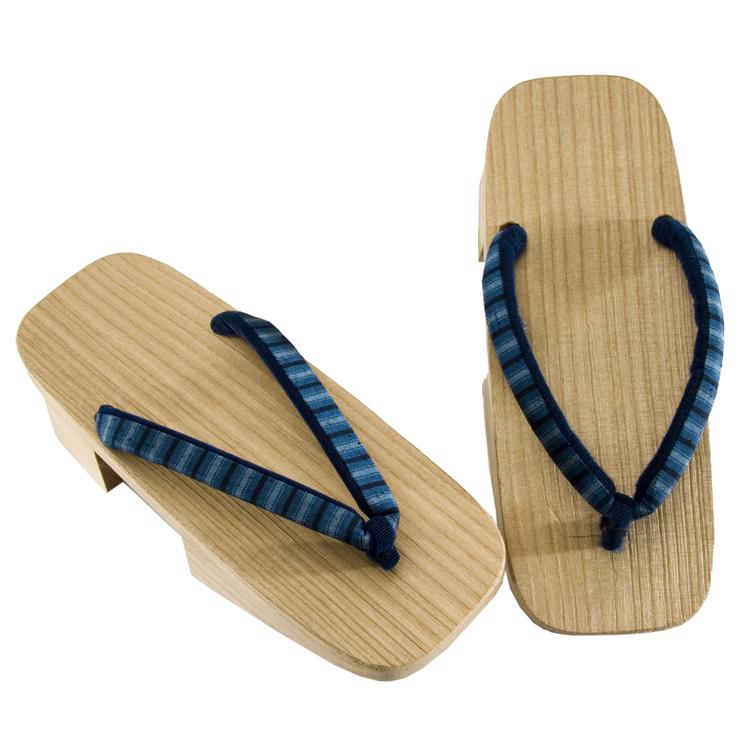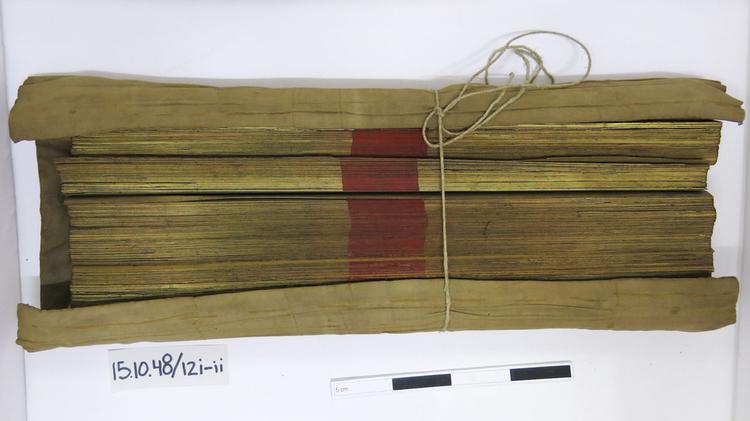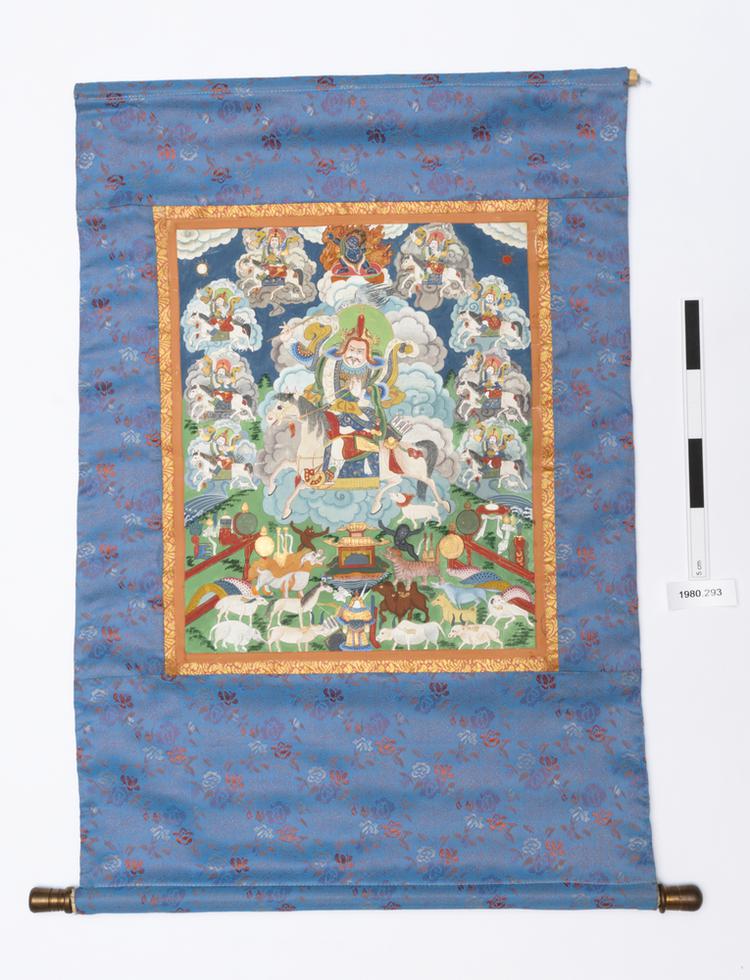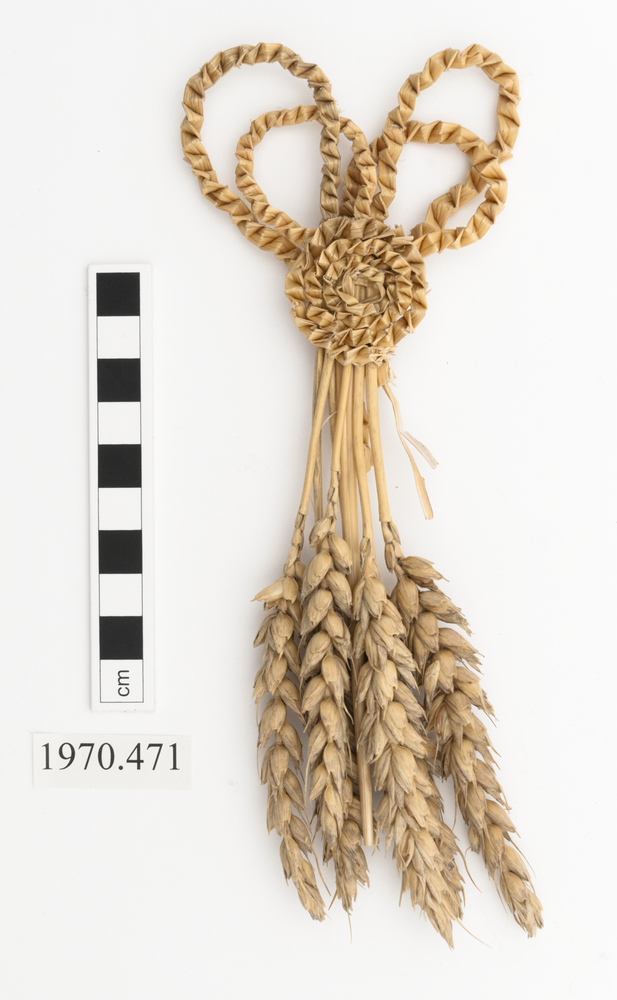
Pair of child's wooden Geta shoes.
Geta are traditional raised and thonged footwear worn by the Japanese for all types of occasions.
The style of geta shown here is a “senryou� geta. Senryou geta have a wedge shaped front ha instead of a rectangle front ha. Ha’s are the raised blocks or ‘teeth’ beneath the sole. They are also named lucky or great geta. This style was especially popular from 1904 -1905 during the Russo-Japanese War. The term “senryou� means occupation in Japanese and refers to the patriotic feeling of the time.
Who by and why them?
Geta sandals are worn by both men and women. All types of people wear geta, from the emperor’s elaborate geta for ceremonies, to sushi chefs who use very high geta to keep their feet above fish scraps, to people who wear “ashida� geta which are made for the rain. Today geta are not as popular as they used to be, but are still worn with traditional Japanese clothing such as kimonos, and also worn with western clothes especially during the summer months.
Getas are very easy to slip on and off. In Japanese culture, it is expected that everyone take off their shoes before entering a house. This serves several purposes: keeps the house clean, preserves the often-delicate flooring, and shows a symbolic “casting off� of worries from the outside world. Even with geta not as popular today, every house still has a “getabako,� or geta box, in the entryway to a house.
Geta allow air to circulate freely around the feet. This circulation is especially useful in Japan’s humid climate. During colder weather, geta maybe be worn along with “tabi,� a sock that has a separate section for the big toe. Geta are made and worn for all different reasons. High geta could be used to keep feet dry or to protect valuable kimonos. Apprentice Geisha (traditional female Japanese entertainers) often wear very high geta which can be difficult to walk in; also, Sumo wrestlers in the 2 lowest divisions must wear geta all the time.
Children’s geta with bells in the heels are worn for special ocassions and to visit the Shinto shrines on particular bithdays. Special geta for dealing with the muddy and wet conditions in the rice growing fields were designed around 2000 years ago when rice production was introduced to Japan. These geta had large wooden platforms that spread the weight over a larger area to avoid sinking in the mud.
Geta allow air to circulate freely around the feet. This circulation is especially useful in Japan's humid climate. During colder weather, geta may be worn along with 'tabi' - a sock that has a separate section for the big toe. Geta are made and worn for all different reasons. High geta could be used to keep feet dry or to protect valuable kimonos.
Apprentice Geisha (traditional female Japanese entertainers) often wear very high geta which can be difficult to walk in. Sumo wrestlers in the two lowest divisions must also wear geta all the time. Children's geta with bells in the heels are worn for special ocassions and to visit the Shinto shrines on particular bithdays. Special geta for dealing with the muddy and wet conditions in the rice growing fields were designed around 2000 years ago when rice production was introduced to Japan. These geta had large wooden platforms that spread the weight over a larger area to avoid sinking in the mud.


































































































































































































































































































































































































































































































































